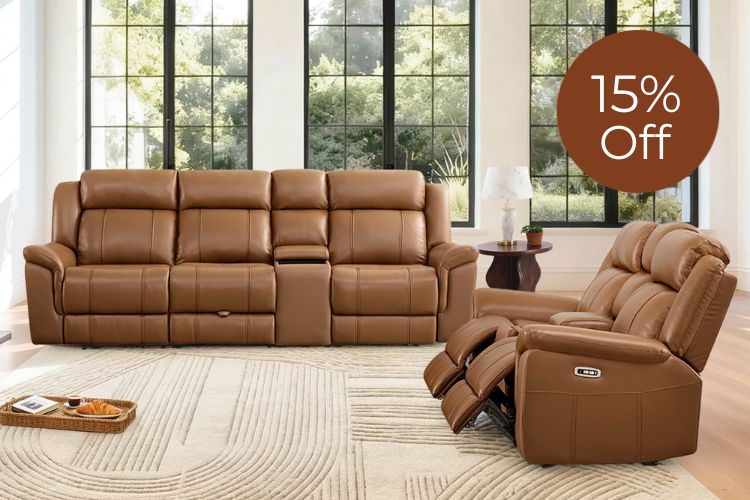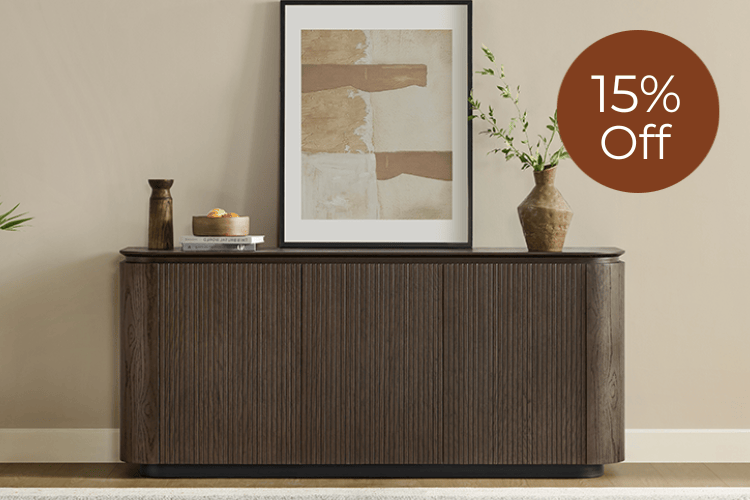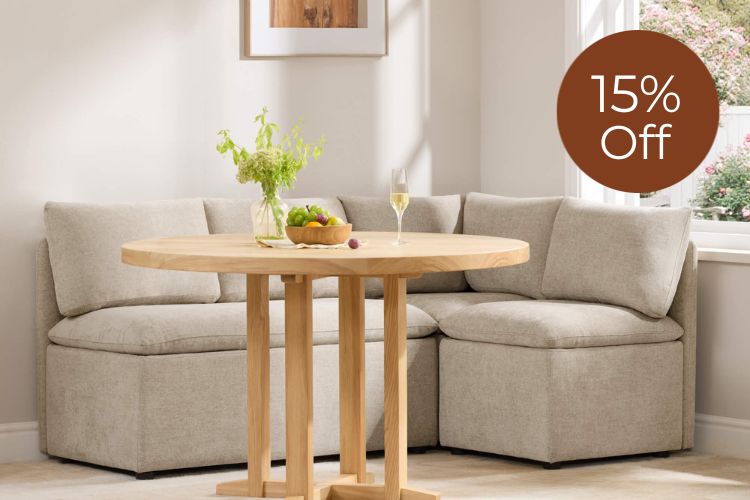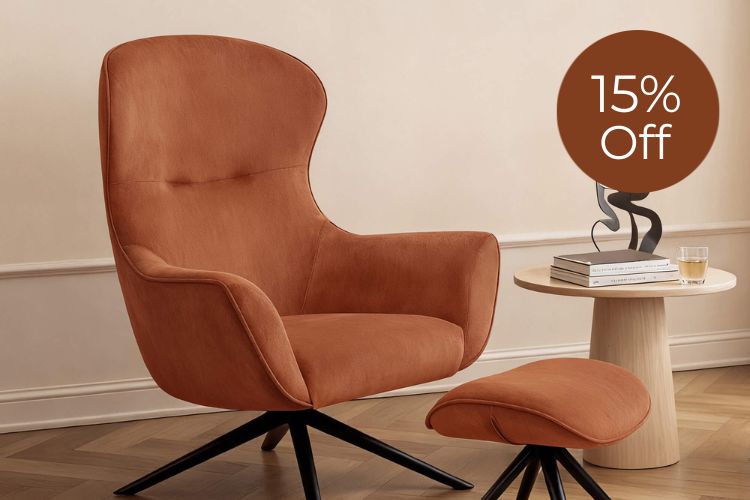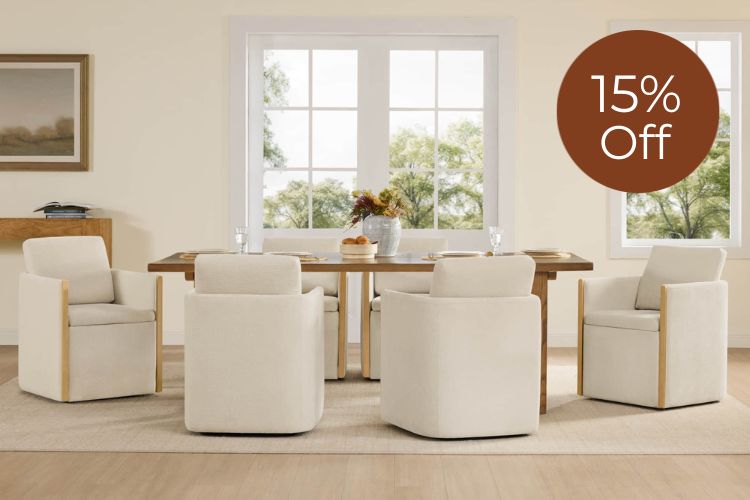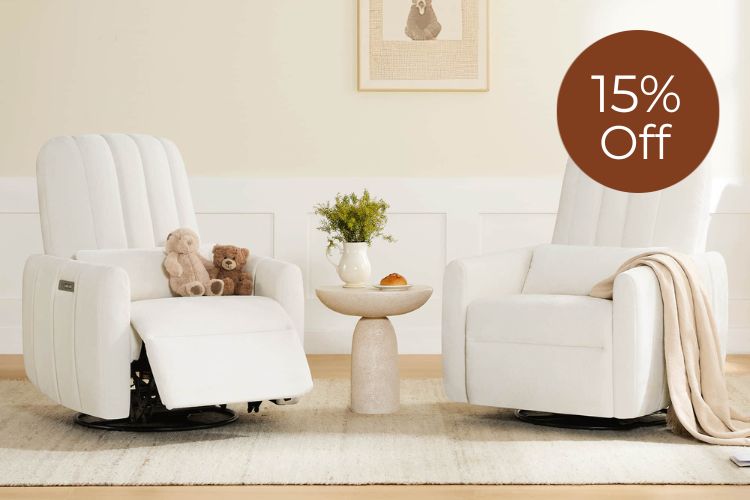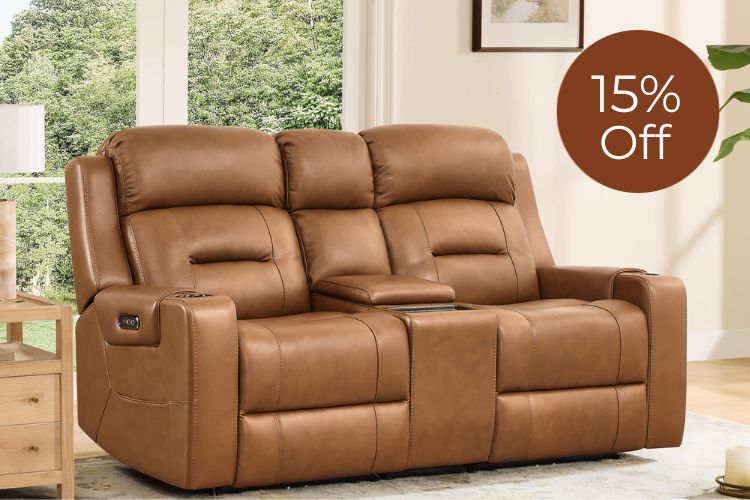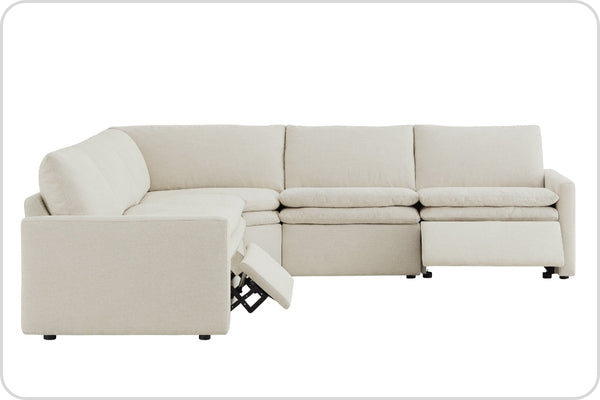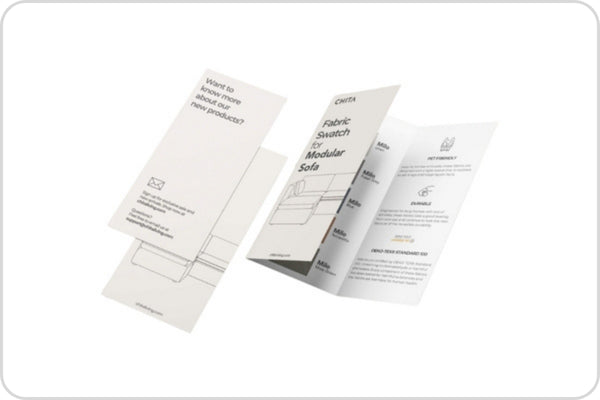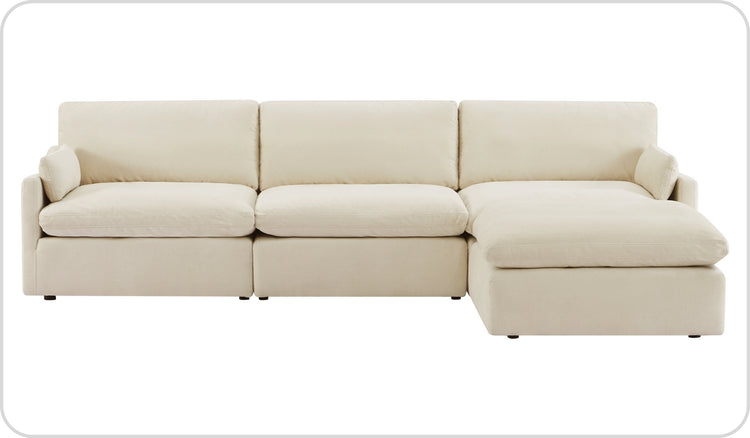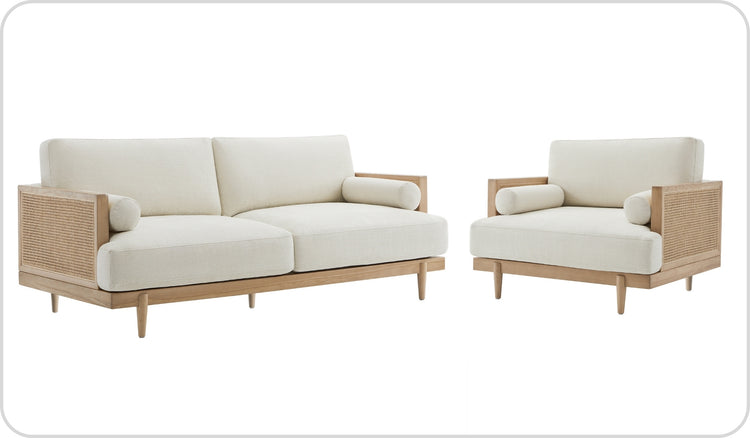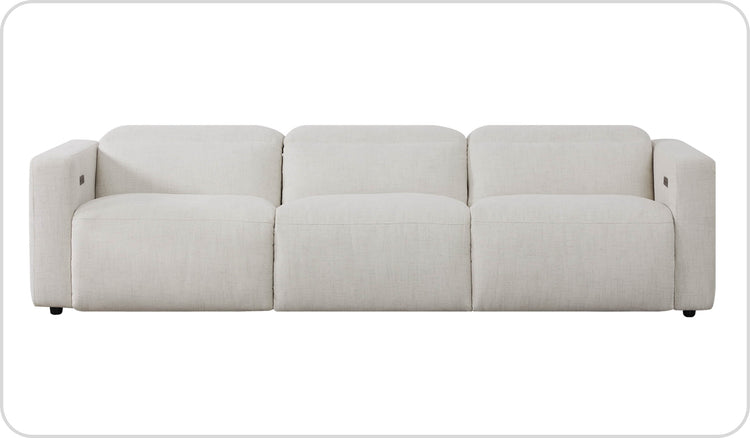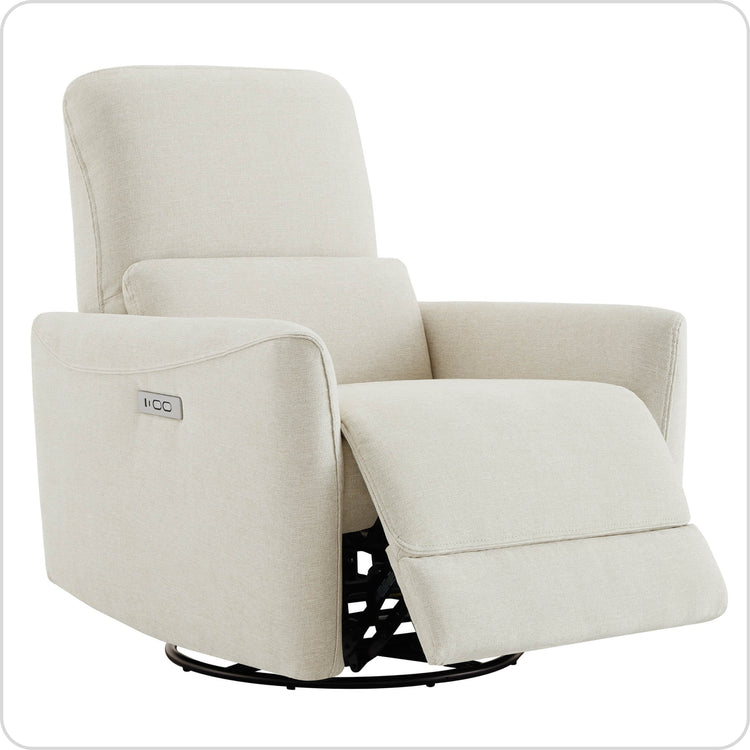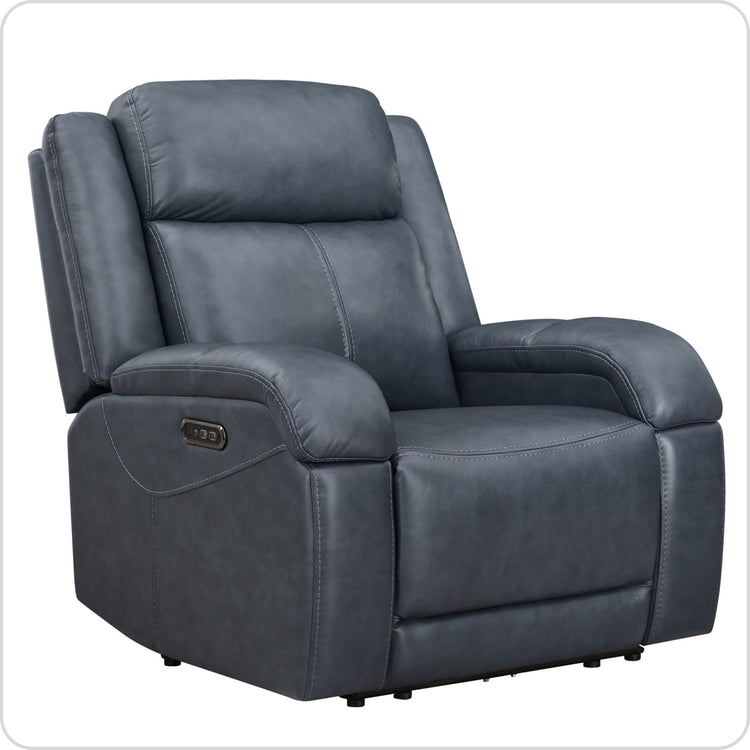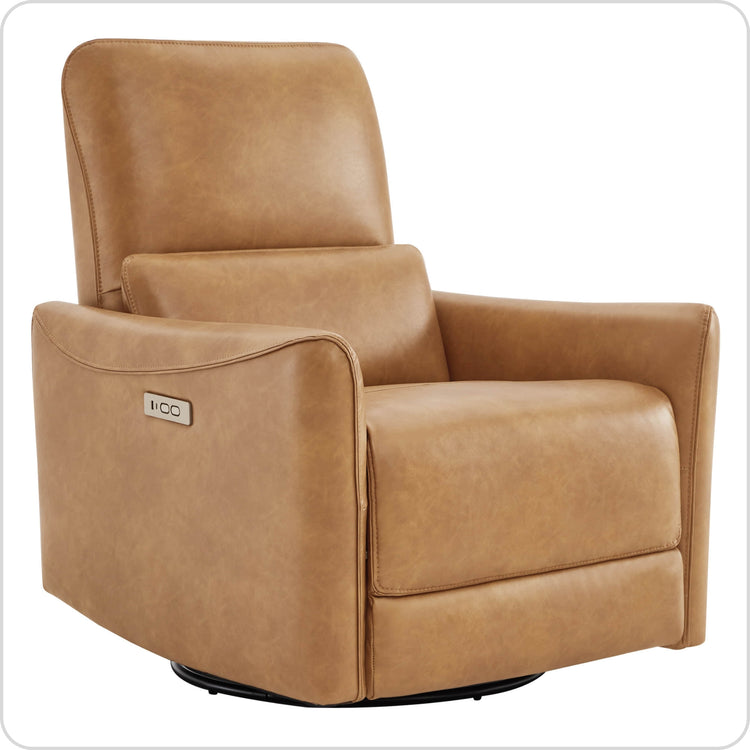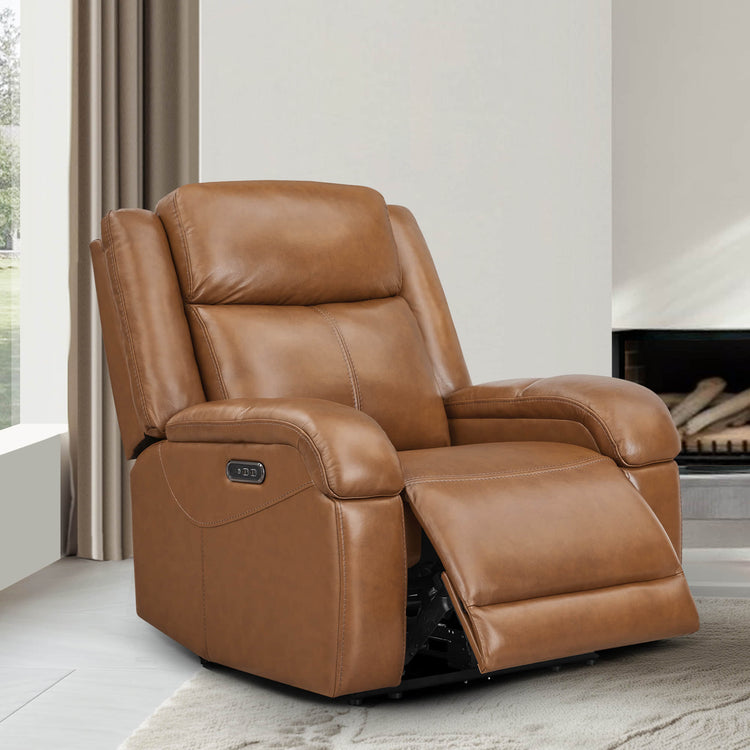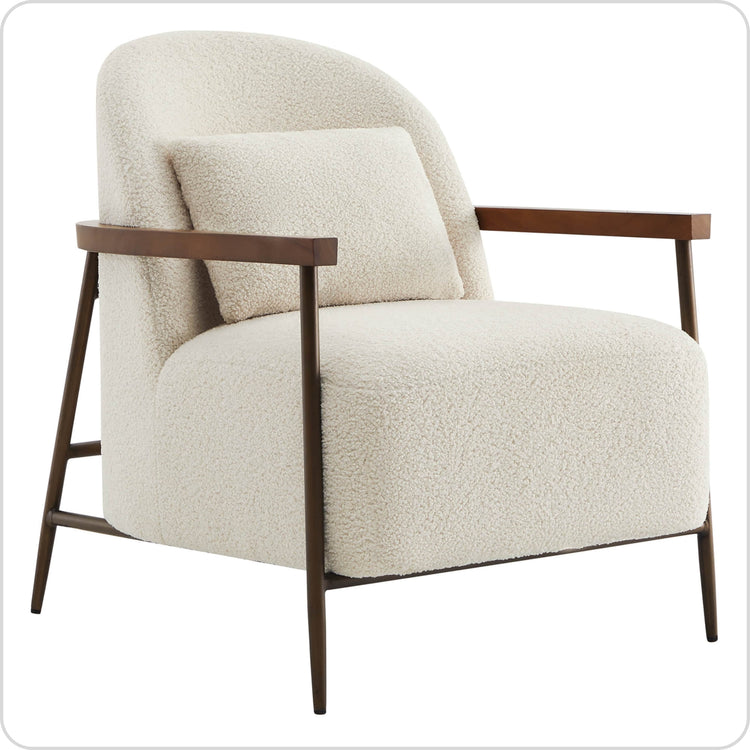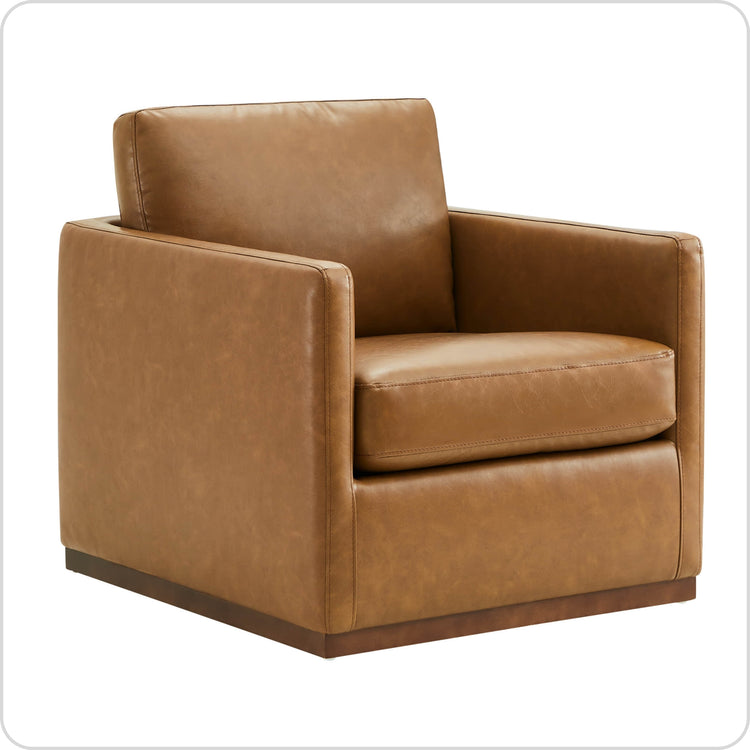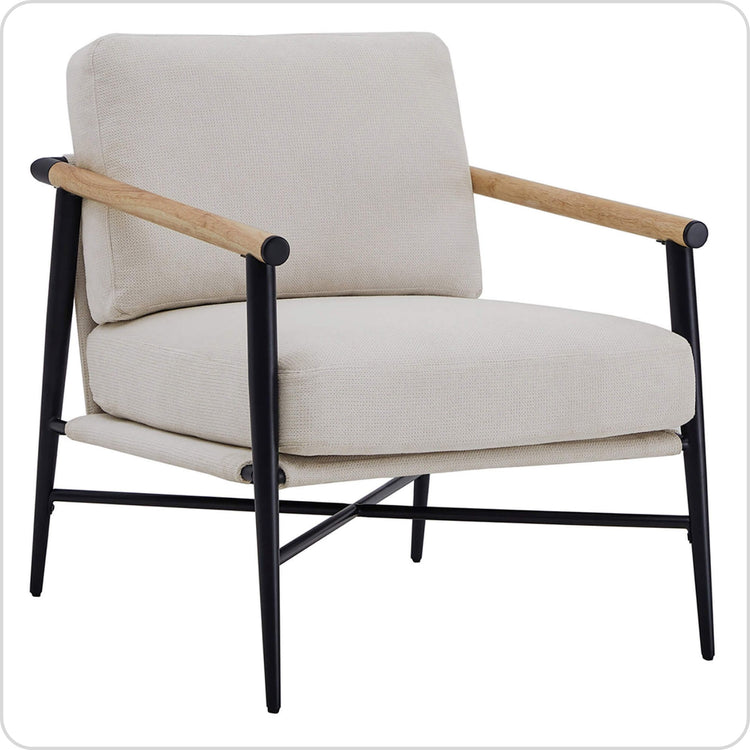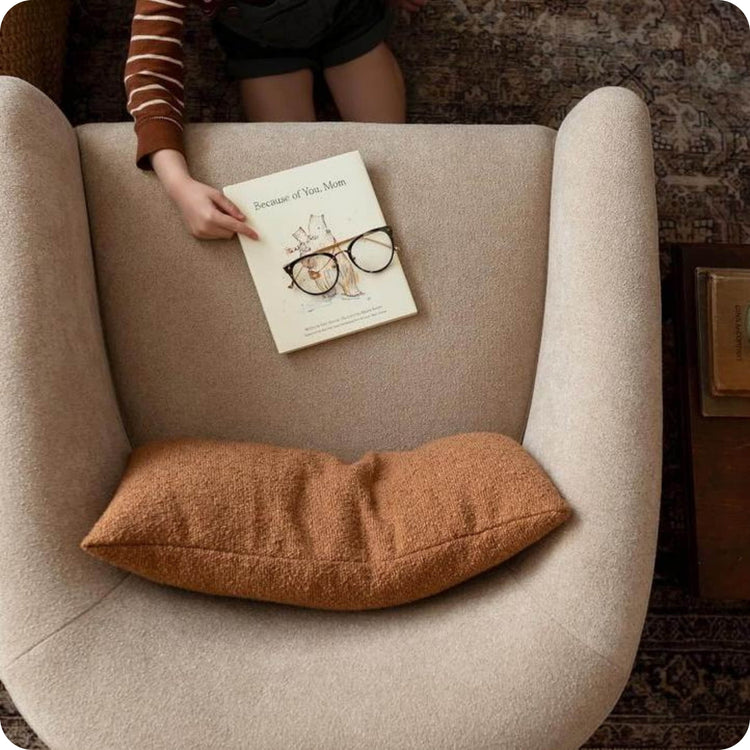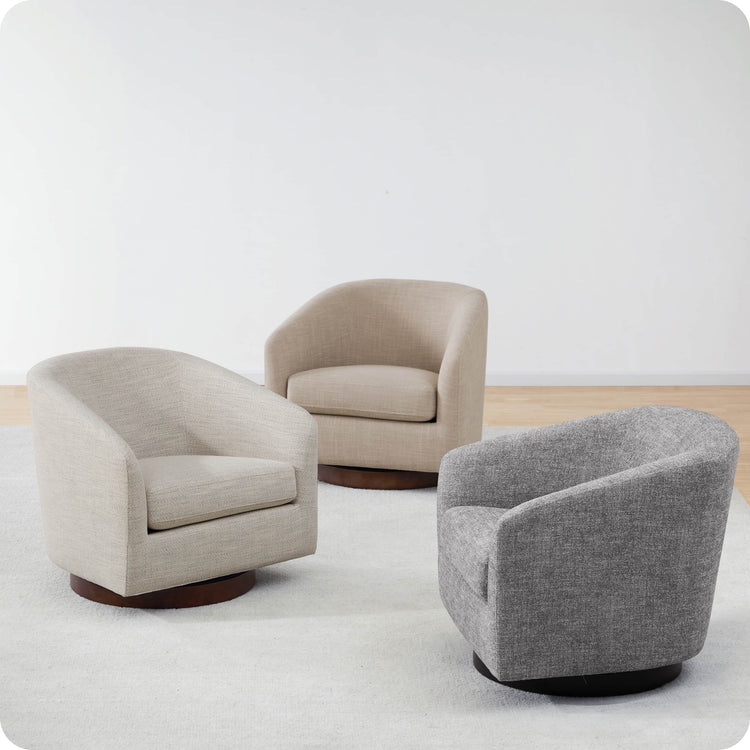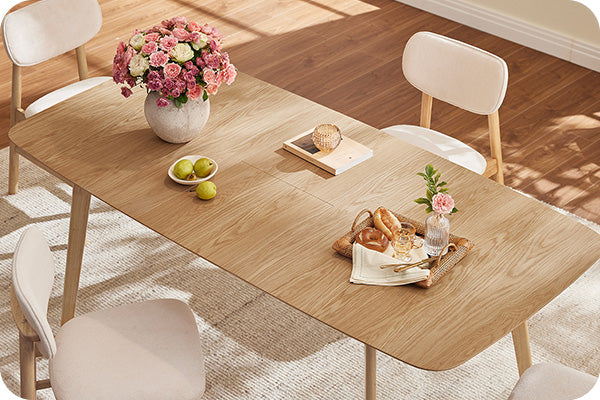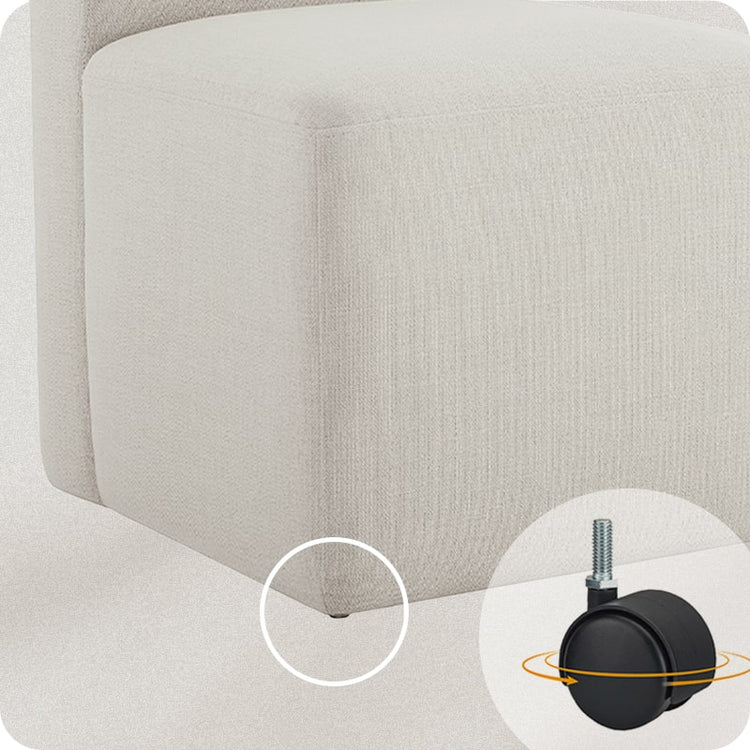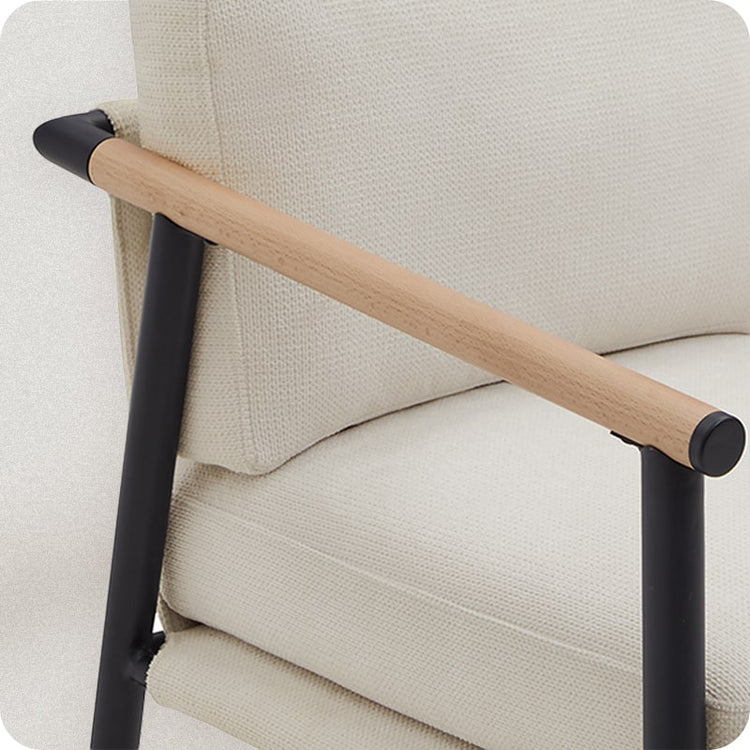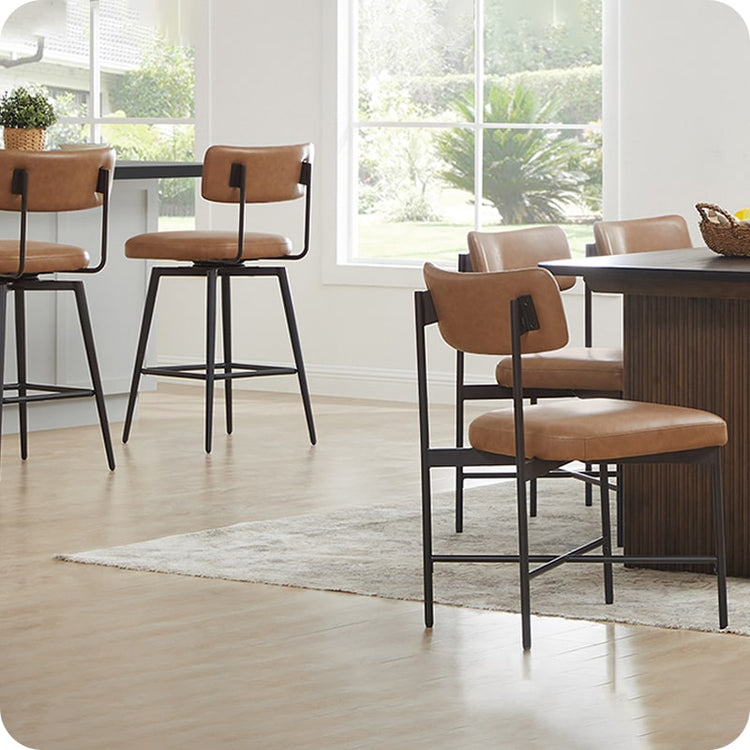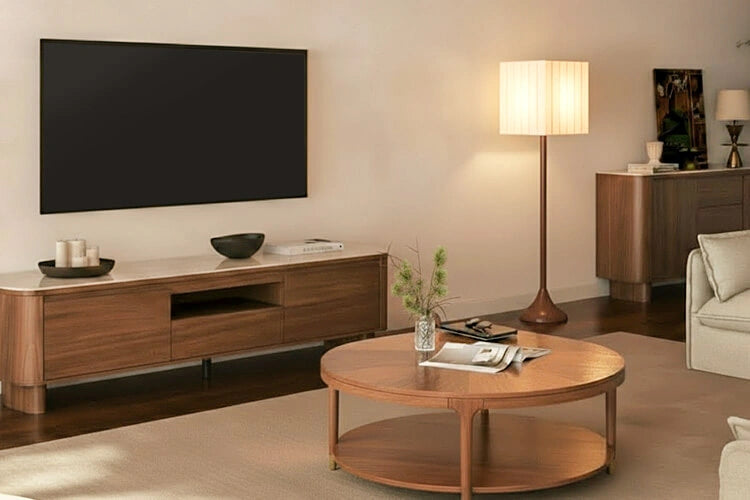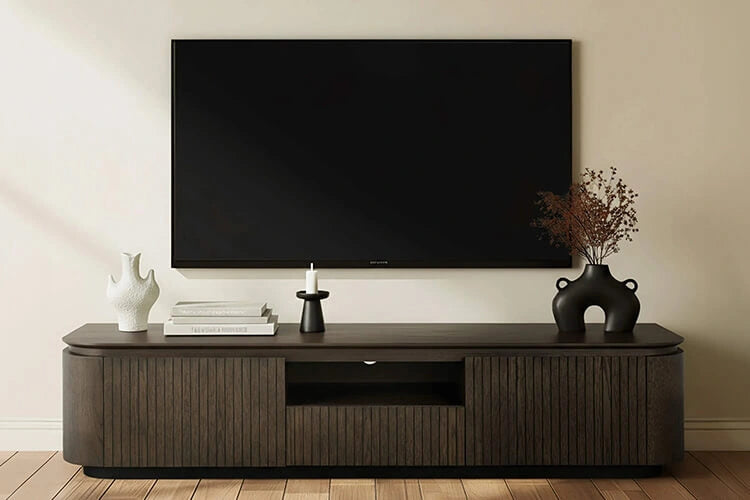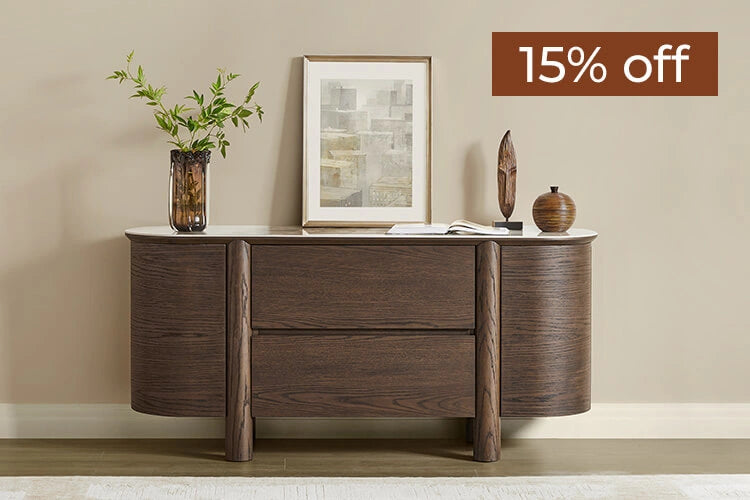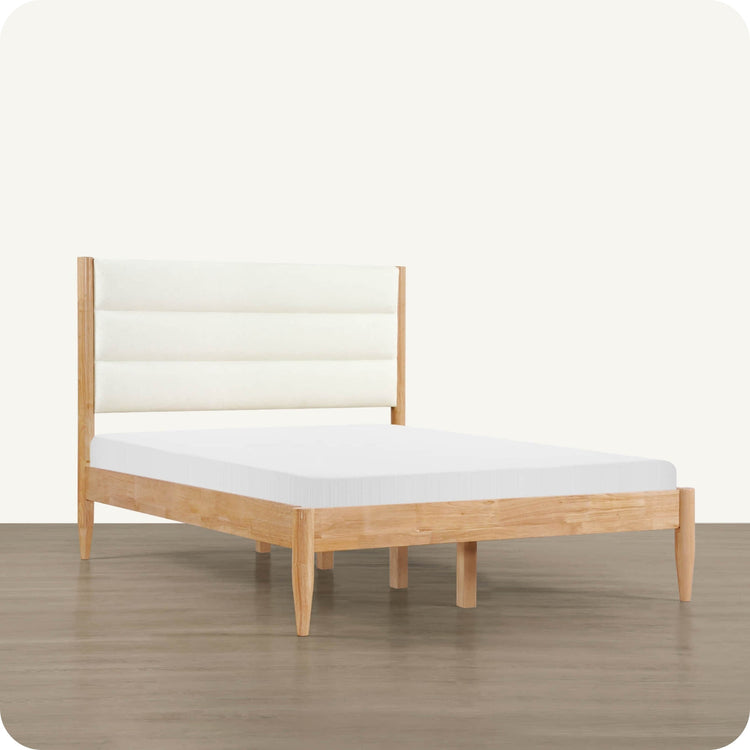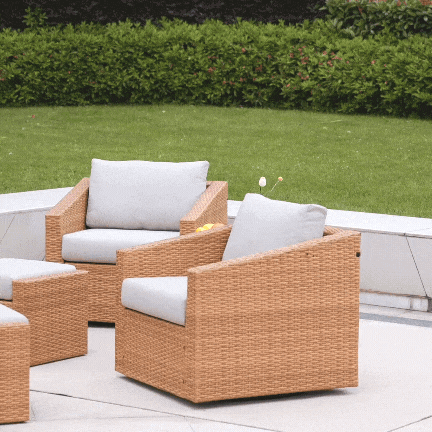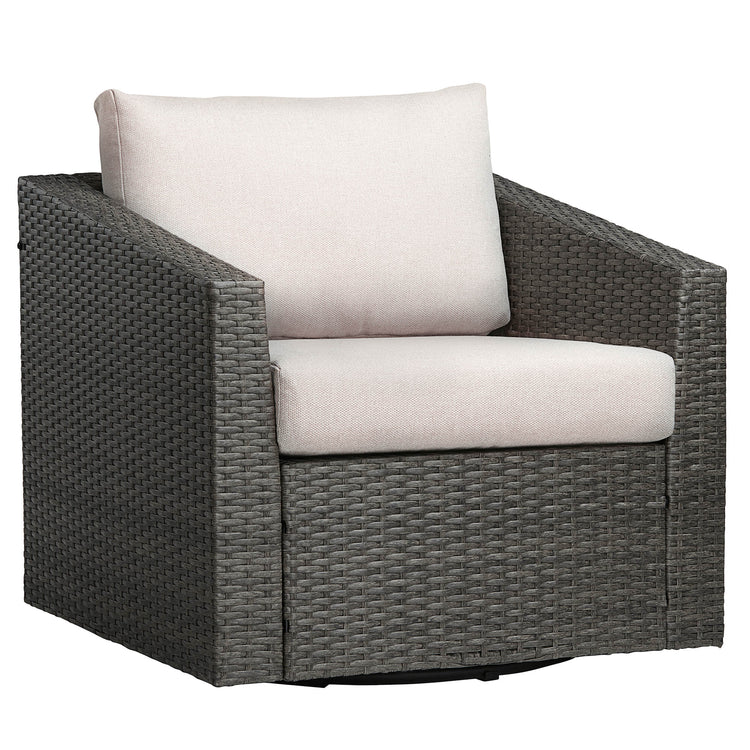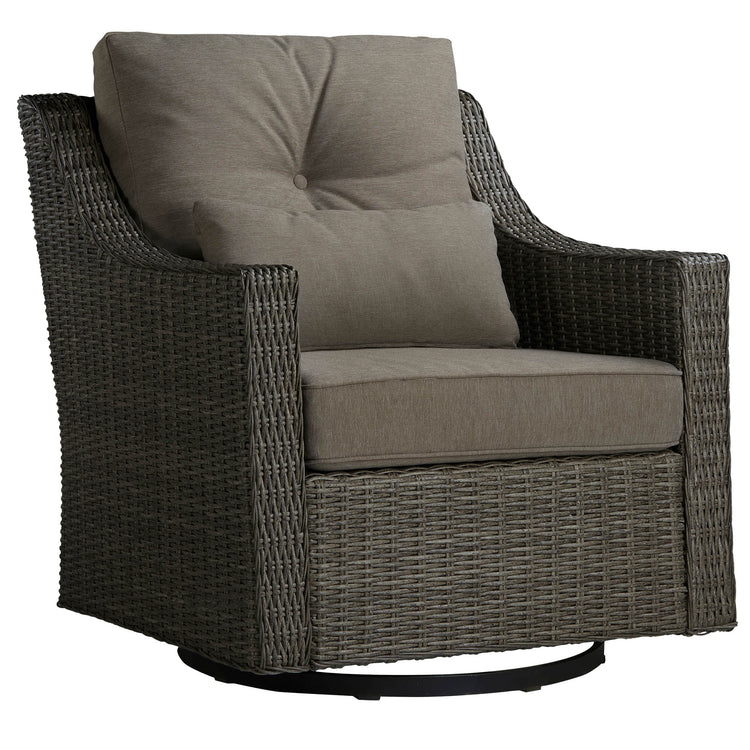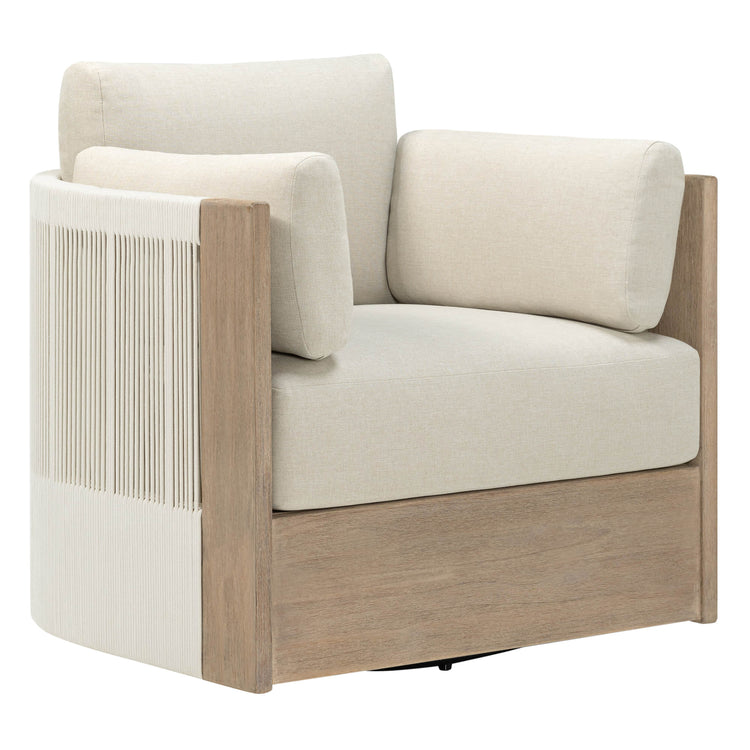When shopping for a comfortable recliner to add to your living room or den, one of the biggest decisions you'll encounter is whether to choose a power recliner or a manual recliner. While both provide the ability to kick back and relax, power recliners and manual recliners have some key differences in terms of features, functionality, price, and maintenance. Understanding those differences will help guide you toward the best recliner type for your needs and preferences.
What is a Power Recliner?
A power recliner is a mechanized chair that uses an electric motor to operate. With the touch of a button or switch, the power recliner smoothly glides from an upright position into a fully or partially reclined position. The footrest simultaneously raises as the chair reclines. Most power recliners tilt back between 45 and 80 degrees.

Shop Tracee Power Recliner >>>
Power recliners feature convenient control panels, typically located on the right side of the chair and occasionally on the left armrest as well. The control panel either has buttons or a toggle switch to activate the powered recline and lift functions of the chair. Many power recliners come with a battery backup feature, so you can still use the chair if the power goes out. The battery charger is usually situated underneath the chair.
What is a Manual Recliner?
Manual recliners are chairs that allow users to manually change the incline position of the chair. They have a locking, oversized lever on the outside of the right armrest that you pull and push to adjust from upright to reclined to somewhere in between. As with power recliners, the manual chair's footrest lifts up simultaneously as you recline the chair's back.

Unlike the movement of power recliners, the angle adjustment of manual chairs is typically not quite as smooth and effortless. It requires some physical effort to fully activate the lever and put your body weight into easing the chair into your desired reclined position. Most manual recliners recline between 45 and 165 degrees.
Key Differences Between Power vs. Manual Recliners
1. Comfort Comparison
When it comes to comfort, power recliners tend to have an edge over manual models due to their powered controls. The electric motor creates a gentle, smooth motion without any sudden collapsing or jerky sensations like some manual models may have. You can find your most comfortable position with ease using the buttons or switch. The convenience of controlled positions makes power recliners particularly well-suited for older adults or those with mobility challenges like arthritis, back pain, or healing injuries.
Old adults' friend: Finley Power Lift Recliner >>>
Having said that, some high-quality manual chairs are very comfortable as well. The amount of effort required to recline a manual chair also depends on your size, strength, and joint flexibility. A heavier person may find manual chairs harder to maneuver compared to a smaller or average-sized user. But for healthy, able-bodied users, manual chairs often provide adequate reclining motion and body support. Consider trying out display models of both types to compare the comfort factor.
2. Customization Options
Another benefit of power recliners, especially higher-end models, is the level of customization available through their control panels. Some models include memory presets, which allow users to save their favorite reclined positions. That way, the chair automatically returns to the pre-programmed recline angle at the touch of a button. Higher-end power chairs sometimes come with massage and heat capabilities, too, which manual models do not offer.
How @Ebeth Fielder uses the customization features of Tracee Power Recliner
Manual chairs do provide some reclining variability and locking positions. But the ability to save and return to precise angles takes customization a step further with power recliners. If replicating your ideal recline position or enjoying a massage setting sounds appealing, a power chair is likely the better fit.
3. Ease of Use
Power recliners absolutely win when it comes to the effort necessary to operate and adjust the chair's position. Simply utilize the control panel to glide smoothly into your desired recline angle. The electric motor does all the work for you, which is a huge perk for those with strength or mobility limitations.
Comparatively, manual chairs require physical exertion to change positions. You have to firmly engage the side lever and push or ease your body weight backward to recline or pull yourself forward to bring the chair upright again. For larger individuals or those with back problems, stiffness, or pain, the amount of force needed could be difficult, painful, or even dangerous without assistance.
If easy adjustability and minimal physical effort are a priority, power recliners are undoubtedly the most user-friendly choice. Manual models, on the other hand, may suit smaller, able-bodied users just fine in terms of maneuverability.If you would like to explore more valuable info,click What Should You Consider When Electric Recliner for the Elderly?
4. Noise Levels
An area where manual recliners prevail over power models is noise level. Power chairs have an internal electric mechanism that creates a faint, albeit audible humming or whirring sound when adjusting positions. For some buyers, the minor motor noise could be annoying or distracting.
In contrast, with manual chairs, you hear nothing but the smooth glide of the metal rails and springs during repositioning. The motion happens quietly without any power assistance. If operating the chair discreetly or limiting sound is preferable in your space, manual recliners tend to run quieter.
5. Space Considerations
Both power and manual recliners require ample clearance space to be fully operated. The chairs need room to recline backward and space in front to extend the footrest without bumping walls, tables, or décor items. Measure your room's dimensions and layout before purchasing to ensure enough space for the chair's full range of motion.
When it comes to the amount of floor space the chair itself occupies, manual and power models have comparable footprints. Some power lift chairs, however, may be slightly bulkier or wider to accommodate the internal motor mechanism. If fitting a recliner into a tight corner or small room, be sure to double-check the product dimensions for both types. A more compact power or manual design may suit your existing layout better.
6. Cost Comparison
One of the most notable differences between power and manual recliner chairs is cost. On average, power chairs retail for $200 to $800 more than comparable manual models, depending on size, materials, and features. The price gap mainly stems from the additional mechanical components and technological capabilities of power recliners.
More specifically, expect entry-level power chairs made with polyester microfiber or basic leather to range between $600-$1000+. Mid-range models in bonded leather or top grain leather with added features like power headrests, lumbar support, and storage tend to cost $1200-$2000. Finally, the most high-end power recliners are made of premium grade Italian leather with advanced features like Wi-Fi and app connectivity and run $2500+.Here is helpful guide for different fabric: Choosing the Right Fabric for Your Power Recliner
By comparison, budget manual recliners start around $200 for smaller bonded leather chairs. Mid-range prices for larger manual chairs made of better quality leather average $400-$800. And high-end designer manual chairs reach upwards of $1500+ for the finest materials and craftsmanship.
So, while power chairs demand higher prices, the improved comfort, customization, and convenience seem well worth the extra investment for many recliner shoppers. Others happily save money, opting for manual models that still deliver ample relaxation and reclining function. Consider your budget along with usage, needs, and area décor when deciding between power and manual types.
CHITA Gentry Leather Recliner review : Is it worth it? @Chris Loh
7. Maintenance Requirements
Lastly, power recliners typically require a bit more regular maintenance than manual chairs. As technologically enhanced products with motors, gears, switches, and electrical components, power chairs benefit from periodic upkeep and inspection to uphold performance and safety. Tasks like checking and replacing backup batteries, testing hand controls, ensuring screws are tightened, and cleaning dust buildup around motors should be done every 6-12 months with power models. You may need to oil the reclining mechanism annually as well.
Comparatively, basic manual chairs just need occasional tightening of hardware if parts become loose over time. And since manual chairs lack sensitive electronic features, they are typically safer for DIY repairs or modifications, too.
So, if tackling basic maintenance sounds unappealing or difficult for your abilities, a manual recliner presents a lower-maintenance ownership experience overall. Routine upkeep of power chairs may require hiring a professional, adding to long-term costs.For more valuable maintenance tips,click A Guide to Maintain Your Power Glider Recliner
Determine the Recliner Type for You
When deciding between power and manual recliner chairs, consider your budget, comfort needs, ease of use, existing space, noise preferences, and ability to perform maintenance. Power chairs excel at convenience, customization options, and assistive positioning for those requiring extra reclining support. Manual types deliver adequate relaxation at a lower price point while running more quietly during operation. Weigh the pros and cons of each to select the right relaxing recliner for your lifestyle!

